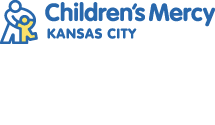A to Z: Ependymoma
An ependymoma (ep-en-duh-MO-muh) is a tumor that usually begins in the lining of the brain ventricles. The ventricles are areas in the brain that are paths for cerebrospinal fluid. This protective fluid cushions the brain and spine.
Most ependymomas develop in children under age 5.
More to Know
The ependyma is a thin layer of cells that lines parts of the brain and spinal cord. These cells make cerebrospinal fluid. When an ependymal cell has a defect and grows out of control, it forms a tumor called an ependymoma.
Most ependymomas do not spread (metastasize) to other areas of the body.
Doctors define ependymomas according to their location. Tumors in the top part of the head are called supratentorial. Tumors in the back of the head are called infratentorial. They are more common than supratentorial tumors.
Kids with ependymomas will feel sick, throw up, and get headaches from increased pressure in the brain. They might feel weak and have vision problems. Infratentorial tumors can also cause trouble with coordination. In infants, a fast increase in head measurement can be a sign of a tumor.
If an ependymoma is in the spinal cord, it can cause pain and changes in sensation. A child might also feel weak in some parts of the body, depending on where the tumor is located.
Doctors often can do surgery on ependymomas in the top of the head and spinal cord. Some of these tumors may also need radiation. Ependymomas in the back of the head usually require much more aggressive treatment with surgery, chemotherapy, and radiation.
Keep in Mind
If the tumor can be completely removed, patients with ependymomas may need no additional treatments. However, some ependymomas will require further treatment — usually radiation therapy and sometimes also chemotherapy.
All A to Z dictionary entries are regularly reviewed by KidsHealth medical experts.
